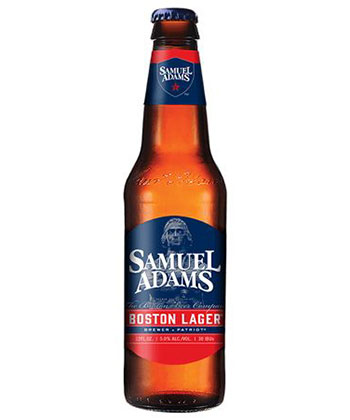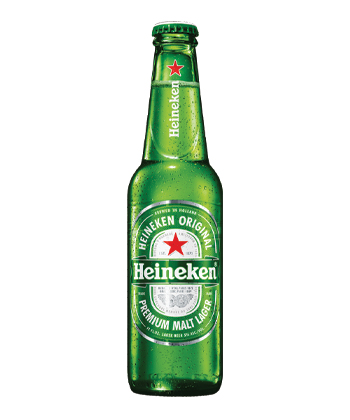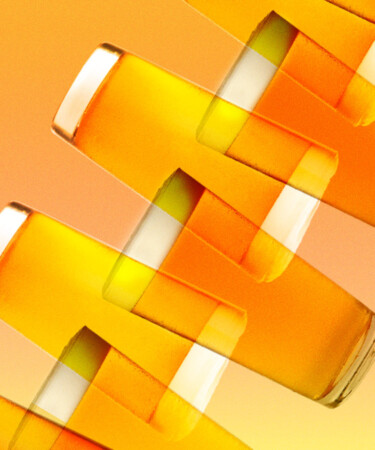IPAs are still leading the charge in craft beer sales, but lagers, pilsners, and other more crushable styles are proving to be a breath of fresh air for beer enthusiasts who have grown weary of the seemingly never-ending haze craze. That said, these lighter styles — specifically American adjunct lagers — are the beers everyone loves to hate, despite their sweeping popularity. They’re easy-drinking, generally not all that complex, and a budget-friendly option for fueling any get-together.
Given the similar profile between lagers and pilsners, some drinkers may be led to believe that they’re one and the same. The fact is that all pilsners are lagers, but most lagers aren’t pilsners. Let’s dive in.
What is a lager?
In simplest terms, lagers are light in color, high in carbonation, and produced from bottom-fermenting yeast. This comes down to the specific strain of yeast employed in the brewing process, which is often a hybrid of Saccharomyces cerevisiae and Saccharomyces eubayanus. These yeasts dwell at the bottom of the wort (the liquid blend of pre-fermented beer ingredients including hops, malt, and water) and thrive at a much lower temperature than top-fermenting ale yeasts.
In the 1400s, when lagers hit the scene, brewers could only make lagers in the colder winter months, and cave storage was used to keep these brews cold when the seasons changed. This explains the origin of the “lager” term, which is derived from the German word “lagern,” or “to store.” By the late 19th century, though, modern refrigeration equipment allowed brewers to make lagers year-round.
Like all beer styles, lagers need hops, but just not as many as other varieties. In light of the somewhat loose definition of lager, it’s a pretty vast category. In the Brewers Association’s (BA) beer style guide, there’s a whopping 35 subcategories of lager, running the gamut from helles lagers and doppelbocks to IPLs, Baltic porters, and of course, pilsners.
What is a pilsner?
A pilsner is a type of pale lager. They’re traditionally produced with pilsner malt, which generally comes from two-row barley, and contain more hops than a standard lager. Pilsners didn’t come about as a stylistic choice, but as a matter of problem-solving circumstance: In the early 1800s, brewers in the city of Pilsen in Bohemia (modern-day Czech Republic) made a 36-cask batch of lager that spoiled. Unsure of what to do, the Bohemians brought in Bavarian brewer Josef Groll for guidance, and he made the crucial decision to up the hop quantity in their beer, as hops double as a flavoring agent and preservative. Thus, the first pilsner-style lager was born in 1842 at the Pilsner Urquell Brewery.
There are two main subcategories of pilsners: Bohemian-style and German-style. Bohemian pilsners tend to use Saaz hops, just like Groll did in the 1840s, while German pilsners often employ Hallertau and Spalt hops. All the hops fall into the category of noble hops and are noted for their floral, peppery, spicy aromas. A lot of what makes the two styles different comes from the notes of these hops — German hops tend to be more herbaceous and assertive than Czech ones — as well as water quality. Water sources in Germany have higher sulfate levels than those of the Czech Republic, and overall make for a more bitter profile. When it comes down to it, though, both beers are crisp, straw-yellow, and clear lagers with dense white heads and pronounced hop flavors. If we’re going to get really specific here, there are also American imperial pilsners, but they’re basically German pilsners with more hops and a higher alcohol content.
Pilsner vs. Lager
As we mentioned, a pilsner is a subcategory of lager. On that note, lagers can range from pale and golden to black in color, and their flavors span from sweet, spicy, and bread-like to sulfuric, roasty, and malt-forward. Additionally, on the malt front, lagers can enlist myriad malts like Vienna, Munich, and Maris Otter malts. Pilsners use… well, pilsner malt, which imparts the style’s signature pale yellow color and clean, hoppy, flavor profile. Ultimately, given the specific malt and hop profiles that differentiate the two, pilsners are spicier and more hop-forward than most other types of lagers. Both pilsners and their parent category use bottom-fermenting, cold-temperature-friendly yeast, and tend to hover in the same ABV range of 4 to 6 percent.
Popular Lager Brands
There are many lager brands to choose from. But to offer a solid introduction to the umbrella style, here’s a list of a handful of the most popular and ubiquitous ones out there, from macro to craft.

- Samuel Adams
- Shiner Bock
- Yuengling
- von Trapp Brewery
- Jack’s Abbey
Popular Pilsner Brands
Pilsners, while not nearly as expansive a category as lagers, still account for a significant chunk of the beer market. For those looking for a rundown of some of the most iconic the world has to offer, check out the list below.

- Pilsner Urquell
- Bitburger
- Grolsch
- Heineken
- Stella Artois
*Image retrieved from Brent Hofacker via stock.adobe.com
